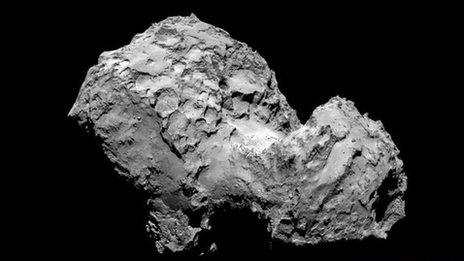Rosetta mission: Potential comet landing sites chosen
- Published
Europe's Rosetta mission, which aims to put a robot on Comet 67P/Churyumov-Gerasimenko, has identified five potential locations for the touchdown.

Potential landing sites: Three on the smaller lobe (B, I, J); two on the bigger lobe (A, C)
The choice of sites was driven largely by operational considerations - they are places engineers believe a lander can get down with the least risk.
No-one has attempted to land on a 10-billion-tonne comet before.
The Rosetta probe will despatch its Philae contact robot to 67P's icy surface on 11 November.
The European Space Agency says it will be a one-shot opportunity.
Rosetta and the comet are currently about 400 million km from Earth, making real-time radio control impossible.
Instead, the process will have to be fully automated with commands uploaded several days in advance.
The five sites on the "longlist" were selected at the end of a special meeting convened in Toulouse, France, this past weekend.
Esa project managers were joined by attendees from the space agencies of France (Cnes) and Germany (DLR), which play key roles in the Philae effort.
Instrument principal investigators on the washing machine-sized robot were also there to argue their preferences, as were the engineers, who could explain the technical possibilities.
If one considers the comet to look like a rubber duck, then three of the chosen potentials (B, I and J) are on the head. Two are on the body (A and C). The dramatic neck region has been ruled out.
The letter designation stems from an even longer list of 10 that was used to kick-off the whole selection process. The letter ordering carries no weight.
A landing site needs to be relatively flat and free from boulders and fissures.
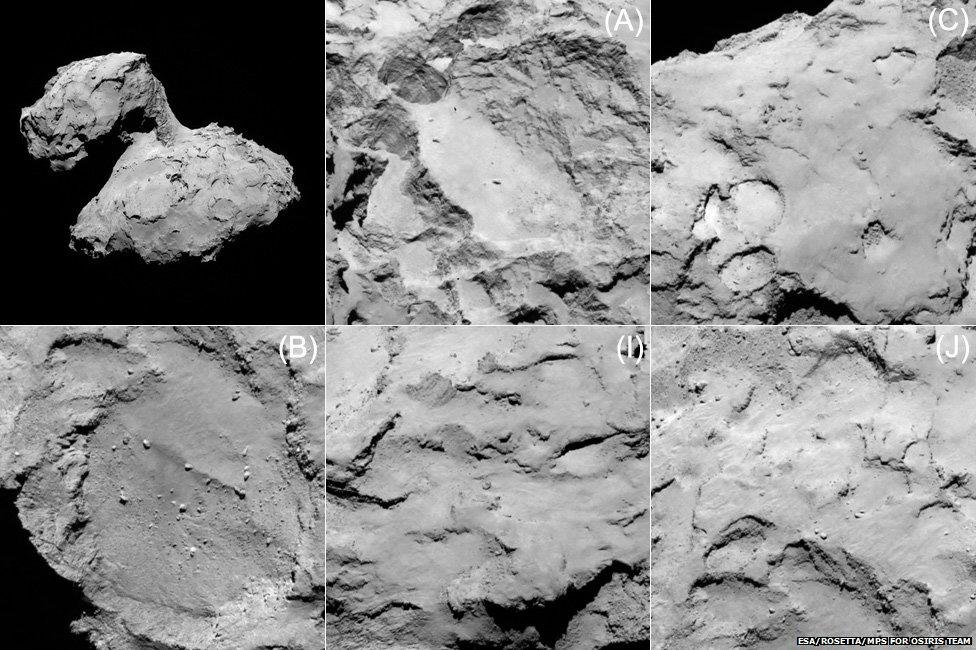
(A) interesting "body" site that will be attractive because it will afford a view of both lobes
(C) another body site that features depressions, cliffs, hills and smooth plains
(B) on the "head" and has a crater-like structure with a smooth bottom
(I) looks to have a lot of fresh material on its surfaces. Also on the head
(J) the third head location, with interesting features and good lighting conditions

One key requirement has been the need to find places on the comet that experience something of a day/night cycle.
This will give not only a better appreciation of the changing behaviour of 67P under all conditions, but will provide the lander with some important protection - from too much sun, which could lead to overheating, or too little light, which would make it difficult to charge the batteries.
The engineers have also emphasised the need to find locations where Rosetta can deliver Philae at the right altitude and velocity, and maintain a communications link throughout the descent, which is likely to take several hours.

The neck region with its dramatic gorge has been ruled out of contention
The longlist will be reduced to a leading candidate and perhaps a couple of back-ups in mid-September.
A final go/no-go decision on a target landing site is expected by mid-October.
By then, Rosetta's cameras and other instruments will have returned detailed data on the number one choice.
Comet 67P has very little gravitational attraction - several hundred thousand times weaker than what Philae would experience at the Earth's surface.
For this reason, it will touch down at no more than a walking pace - about 1m/s.
It will use harpoons and ice screws to try to hang on to the comet and avoid bouncing back into space.
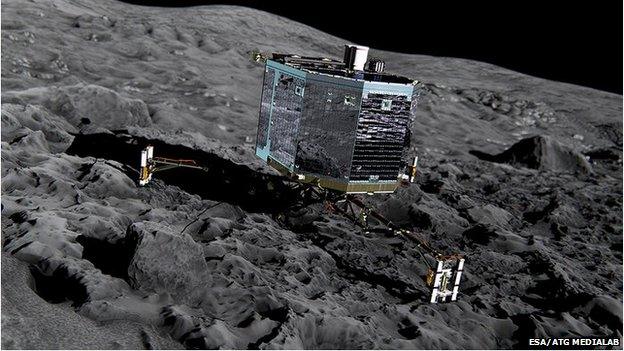
Getting Philae down safely to any of these sites is going to be an immense challenge

Jonathan.Amos-INTERNET@bbc.co.uk and follow me on Twitter: @BBCAmos, external
- Published7 August 2014
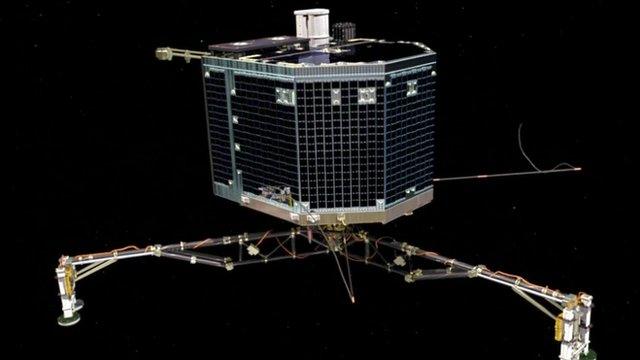
- Published7 August 2014
- Published21 August 2014
- Published14 August 2014
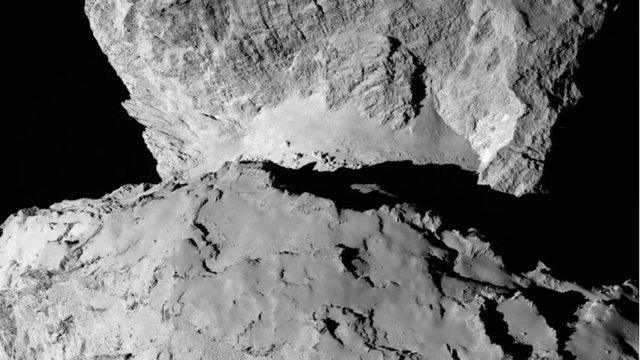
- Published6 August 2014
